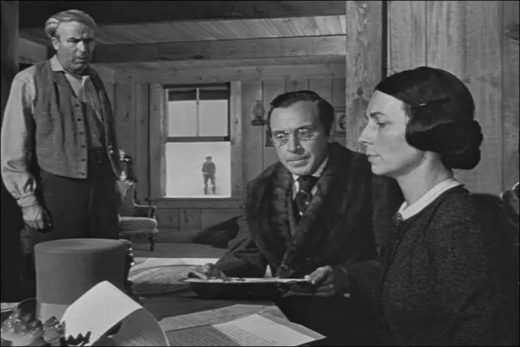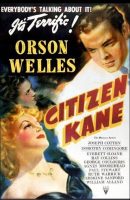Why is Citizen Kane by Orson Welles so popular around the world? Let’s learn together.
Throughout the history of cinema, many films have been made and continue to be made. But there are some productions that refuse to rot on the dusty shelves of cinema history and are watched fondly until today, against time. Citizen Kane is one of the movies that fits this description exactly.
Citizen Kane, which met with the audience in 1941, managed to survive until today by writing its name in the history of cinema with golden letters. The name behind this success is master director Orson Welles. Citizen Kane became a remarkable film with its revolutionary innovations and contributions to the cinema, as well as its fearlessness due to its subject matter. So why is Citizen Kane, one of Orson Welles’ best-known films, so beautiful? The YouTube channel wolfcrow explained the cinematic success behind the film with its Citizen Kane criticism. Let’s find out together what are the elements that make Citizen Kane beautiful.
Technical Craftsmanship
With its revolutionary techniques, Citizen Kane shattered existing stereotypes and showed the world what can be achieved in filmmaking. The success of the legendary cinematographer Gregg Toland in this film is an undeniable fact. Almost every scene of Citizen Kane, not one or two, was groundbreaking due to different cinematic innovations.
Orson Welles is considered the master of long shots. This success can be clearly seen in Citizen Kane. An example is the scene at the beginning of the movie when Kane was a child, where we see his mother wanting to send him. The fact that they moved the tables to convey this scene to the audience in a single long shot reveals Welles’s efforts in this regard.
Citizen Kane is seen as one of the most successful films in terms of adding depth to the shots. Even though we are looking at the group talking inside the house in the same scene with a close-up, the fact that we see Kane playing outside the house in the background proves the visual depth in the scene.
Another factor that enables the depth to be created so successfully is the wide-angle lenses used by Welles and Toland. Thanks to these lenses, the screen is officially divided into layers, and the viewer is offered a viewing pleasure with plenty of perspective. While we see a character’s face in the foreground, it is possible to perceive the actions taking place in the background. One of the scenes in the bar exemplifies this layered composition. In the part where the newspaper reporter leaves the bar and enters the phone booth, the locations of the reporter, waiter and Susan character and the distance between them are fully conveyed to the audience, and the scene is divided into layers.
When the depth of focus was greater than the camera could record in one go, split diopter lenses were used and then these images were combined. Citizen Kane is full of split diopters that are very difficult to make and today’s directors struggle with despite dozens of digital aids. In addition, when the mise en scene got too big, many outdated shooting techniques were used, such as matte paintings to widen the set, nude light on a dark background to imitate the crowd, and dozens of reflection shots. This is another factor that reveals the success of Orson Welles.
When it comes to the use of light, such an art of lighting can be directly attributed to the famous painter Caravaggio. With its sharp shadows and silhouettes, Citizen Kane is a revolution in the use of light. Toland wasn’t afraid of beams of light and lowlighting the foreground. In some scenes, the lights were literally dancing. When one light went off, another would start to come on. Nets and filters were used when softness was required, and complex light changes were used in transitions.
Citizen Kane is a production that deserves praise in terms of art direction. The use of depth mentioned above was used not only for the background but also to host optical illusions. In some scenes, it is understood that the windows are larger than expected, and in others, the fireplace, which seems normal, is actually gigantic. This serves to shock the audience during a perfectly normal-sounding dialogue.
The technical achievements of Citizen Kane, which is a cinematography book, do not seem to end with counting. While Orson Welles’ meticulous work deserves credit, cinematographer Gregg Toland also deserves credit for his incredible success in the film. The fact that a very arrogant and powerful director like Welles shared his place on the title card with Toland is the biggest proof that the success of the cinematograph was also accepted by Welles.
Storytelling
One of the most decisive elements of storytelling is undoubtedly acting. The performance of Orson Welles, who brings the character of Charles Foster Kane to life, is one of the most important performances that makes it possible to serve this purpose. But the secondary characters and the actors who bring them to life are also one of the biggest factors that complete the morally decaying world Welles wants to create, where it is not possible to distinguish between truth and falsehood.
The character of Kane, on the other hand, stands out with his distasteful nature almost until the end of the movie. This is the part where Citizen Kane really shows off his storytelling prowess. The film, which deals with a mystery, hosts the process of learning the reason behind Kane’s last word, ‘Rosebud’. Just like the reporter in the movie, the audience wants to know why the word was uttered and what it means to Kane. This pushes us to learn about Kane’s life. Although Kane is not loved, his life is a matter of curiosity and the mystery is expected to be solved.
The risk taken in terms of storytelling is the newsreel section at the beginning of the movie, in which Kane’s whole life is told to the audience for the first time. The scenes used in this cut needed to look bad, so the handheld cameras used by the paparazzi at that time were used.
The editing, another success of the movie, was planned in Welles’ mind. It does not seem possible to construct such complex transitions with random trials. One of the best examples of this success is the scene that focuses on the bad course of Kane and Mary’s marriage, which changes day by day. The acting, the dialogues, and the perfect timing of the camera are the product of a precision that is difficult to achieve. This is proof that Citizen Kane goes beyond the limits of words in storytelling and uses all the possibilities offered by cinema.
Entertainment
Citizen Kane is a highly watchable production, even though it was a very unsuccessful revenue at the box office. Due to its intellectual intensity, the audience can realize new things every time they watch it. This is one of the biggest criteria for evaluating a movie in the entertainment category.
Despite its box office success, Citizen Kane was successful in DVD and Blu-ray sales. It has also been confirmed by the Library of Congress to be culturally, historically, and aesthetically significant. This is exactly why we always see Citizen Kane in the top five of the movie lists.
Art
Is Citizen Kane a work of art? Citizen Kane still stands today, freed from its controversial historical burden. It also shows filmmakers what cinema can be like today, and with its revolution in the art of film, it will likely do the same for filmmakers of the future. Citizen Kane has been valued like a wine throughout the history of cinema. He distributed the innovation that other films made in a single field to almost every field of cinema, and Orson Welles, together with Gregg Toland, came up with a work that would educate the entire cinema industry.
Citizen Kane (1941)
Directed by: Orson Welles
Starring: Orson Welles, Joseph Cotten, Dorothy Comingore, Everett Sloane, Ray Collins, George Coulouris, Agnes Moorehead, Paul Stewart, Ruth Warrick, Erskine Sanford, William Alland
Screenplay by: Herman J. Mankiewicz, Orson Welles
Production Design by: Pandro S. Berman
Cinematography by: Gregg Toland
Film Editing by: Robert Wise
Costume Design by: Edward Stevenson
Set Decoration by: Sydney Moore, Darrell Silvera
Art Direction by: Van Nest Polglase
Music by: Bernard Herrmann
MPAA Rating: None.
Distributed by: RKO Radio Pictures
Release Date: May 1, 1941 (Palace Theatre), September 5, 1941 (United States)
Views: 359







